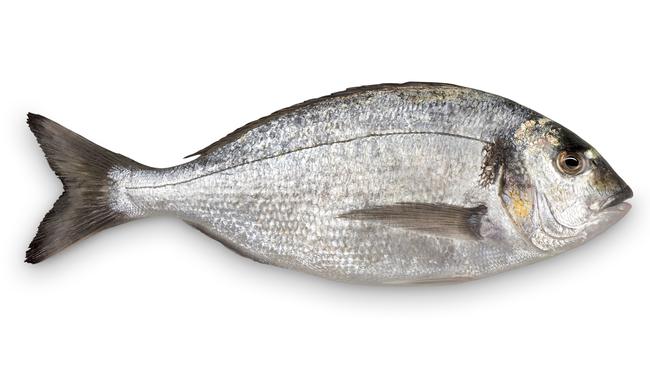Josh Niland’s Take One Fish:a new way of thinking
There’s more potential in a fish than just two fillets. Take it from chef Josh Niland. But would you draw the line at his fish ‘tripe’?

It was a super-quick snack; you really couldn’t call it “lunch”. A small piece of thawed Spanish mackerel fillet from the freezer, a remnant of a recent trip to Exmouth, WA, salted and pan-fried with olive oil, splashed with lemon from the tree across the road. Job done. My friend Matt had caught the fish; the deckies on our charter boat had taken the meat off the frame and disposed of the carcass over the side; and quite a few kilos of this beast had come home with us frozen. A gift that keeps on giving.
Coincidentally, with a fork in one hand, the other turned the pages of a handsome book that had arrived that very morning and lo, Chapter 13 is… Spanish mackerel. An entire chapter devoted to one fish. “We have discovered that dry-ageing allows it to develop a wide range of flavour,” says the author. “Between days two and five the fish carries a sweetness and briny-like characteristic that is perfect for pan frying, roasting or poaching, while from days 12-16 the fish develops a savoury, almost mushroom-like complexity that lends itself to being roasted on the bone and paired with hearty accompaniments.”
I flicked on. Spanish mackerel curry (Thai-ish) using bone-in chops; another recipe calling for (optional) Spanish mackerel roe; dry-aged fillet on the bone. I looked at my little bit of tanned, delicious and meaty fillet and experienced a slight pall of underachievement.
Lots of chefs encourage us to cook differently, but not so many encourage us to think differently. Josh Niland’s second book, Take One Fish (Hardie Grant, $55), picks up where his last – the much-acclaimed Whole Fish Cookbook – finished: part recipe book, part technique manual but, more than anything, an entreaty to us all to look at a fish and see more than a fillet, an attitude he describes as “lazy and neglectful”. He re-explains the logic: “There is a minimum of 90 per cent delicious potential in each and every fish in good condition, a number that represents nearly double the commonly accepted yield. What does this mean? Well, ultimately, for every fish caught we can generate the yield of two. So, one less fish is caught, effectively doubling the output of fish for the world.”
I know a lot of people for whom this message will fall on deaf ears. They are good anglers, used to the idea of abundance. Reel it in, take the good bits, chuck the rest. I get it. But for anybody who buys a whole fish at a shop and pays a premium, it makes a lot of sense. “This conversation is urgent: it’s past time to question the normalisation of half of fish going in the bin,” says Niland. “Fish is so much more than two fillets held together by a head and a tail.”
Niland has chosen 15 species to drill down on, based on accessibility, ranging from sardines to swordfish. And across that species progression are some fairly radical ideas. But maybe they’re only radical because we are so blinkered in this country about eating bone-free animal muscle. John Dory liver terrine, for example? Hell, we eat chicken and duck and calf livers, don’t we? Or, from the same species, salt and pepper “tripe”? “For me,” writes Niland, “a fish stomach was really the final frontier in working out how we could remove the textural, visual and overall discomfort an average consumer feels towards an organ.”
Like I said, plenty of chefs can help you cook differently; Niland is one of the rare ones.



To join the conversation, please log in. Don't have an account? Register
Join the conversation, you are commenting as Logout